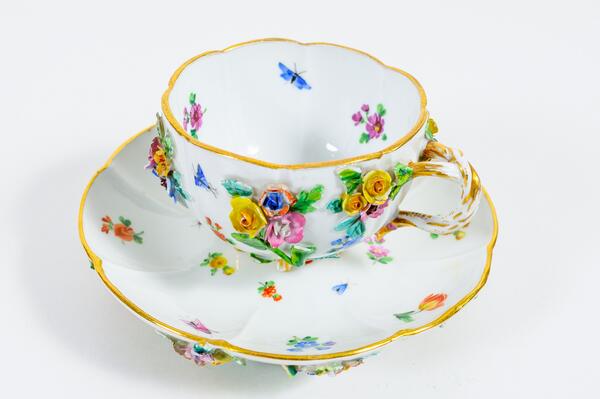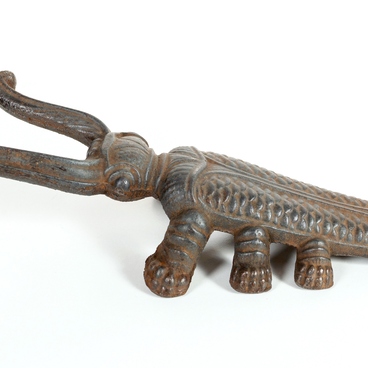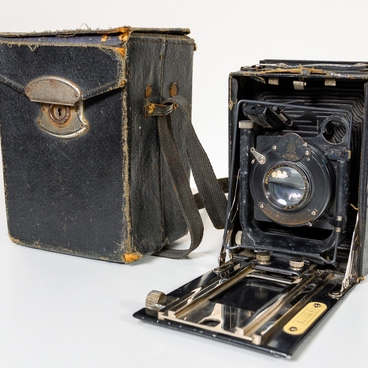The tea set, which is kept in the National Museum of the Republic of Mari El, belonged to the family of landowners Sheremetevs who owned the castle in the village of Yurino. The cup and saucer were made at the famous Meissen manufactory in Germany. They produced porcelain products that resembled Chinese in quality.
The manufactory in the city of Meissen was opened in 1710 and became the first porcelain factory in Europe. The manufacturing technology was developed by the chemist Johann Friedrich Böttger and the scientist Ehrenfried Walther von Tschirnhaus. For a long time, the technique was kept secret.
It was in Meissen that the world’s first solid porcelain was produced. It contained up to 66% kaolin clay, up to 25% quartz, and feldspar that was known at that time as Chinese stone. Such materials were durable and resistant to heat and acids. This particular porcelain could be easily distinguished from similar ones by the special sound produced upon a slight tap on the item’s surface with a wooden stick.
The first Meissen products were made in the Chinese and Japanese style with images of landscapes or ornaments. Later they were replaced by purely German motifs — mainly lace patterns and flowers.
The first Meissen service appeared in Russia in 1728. The German ruler Friedrich August I, who was nicknamed the Strong, sent it as a gift to the future Empress Elizabeth I. Later, Catherine the Great, Counts Stroganov, and Princes Yusupov commissioned the products of this factory.
By the middle of the 18th century, when the Rococo style came into fashion, the products of the Meissen manufactory began to be decorated with stucco details and rich ornaments. Such dishware was popular in the royal palaces of different countries. The richest families of Europe were the constant customers of the manufactory. And Russia commissioned so many of these porcelain products that the factory even set special days when products were made only for Russia. In 1770, warehouses in St. Petersburg, Moscow, Kyiv, and other cities received about 40% of all exports from Meissen.
Nowadays, Meissen porcelain is still produced. At the same time, the manufactory retains old-time technologies: many products are entirely handmade, and paints and glazes for painting are mixed according to recipes of the 18th century.
The manufactory in the city of Meissen was opened in 1710 and became the first porcelain factory in Europe. The manufacturing technology was developed by the chemist Johann Friedrich Böttger and the scientist Ehrenfried Walther von Tschirnhaus. For a long time, the technique was kept secret.
It was in Meissen that the world’s first solid porcelain was produced. It contained up to 66% kaolin clay, up to 25% quartz, and feldspar that was known at that time as Chinese stone. Such materials were durable and resistant to heat and acids. This particular porcelain could be easily distinguished from similar ones by the special sound produced upon a slight tap on the item’s surface with a wooden stick.
The first Meissen products were made in the Chinese and Japanese style with images of landscapes or ornaments. Later they were replaced by purely German motifs — mainly lace patterns and flowers.
The first Meissen service appeared in Russia in 1728. The German ruler Friedrich August I, who was nicknamed the Strong, sent it as a gift to the future Empress Elizabeth I. Later, Catherine the Great, Counts Stroganov, and Princes Yusupov commissioned the products of this factory.
By the middle of the 18th century, when the Rococo style came into fashion, the products of the Meissen manufactory began to be decorated with stucco details and rich ornaments. Such dishware was popular in the royal palaces of different countries. The richest families of Europe were the constant customers of the manufactory. And Russia commissioned so many of these porcelain products that the factory even set special days when products were made only for Russia. In 1770, warehouses in St. Petersburg, Moscow, Kyiv, and other cities received about 40% of all exports from Meissen.
Nowadays, Meissen porcelain is still produced. At the same time, the manufactory retains old-time technologies: many products are entirely handmade, and paints and glazes for painting are mixed according to recipes of the 18th century.



